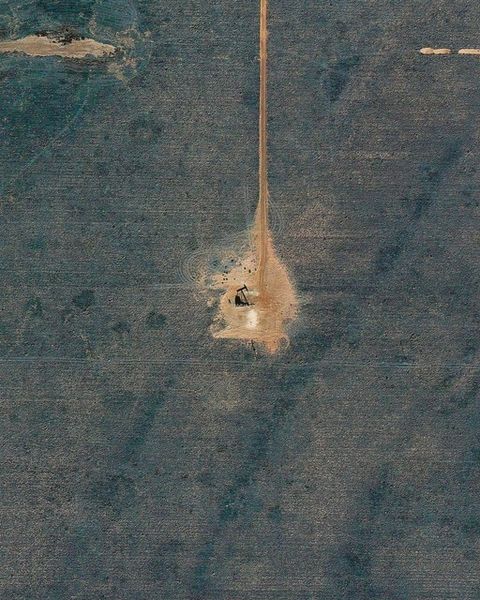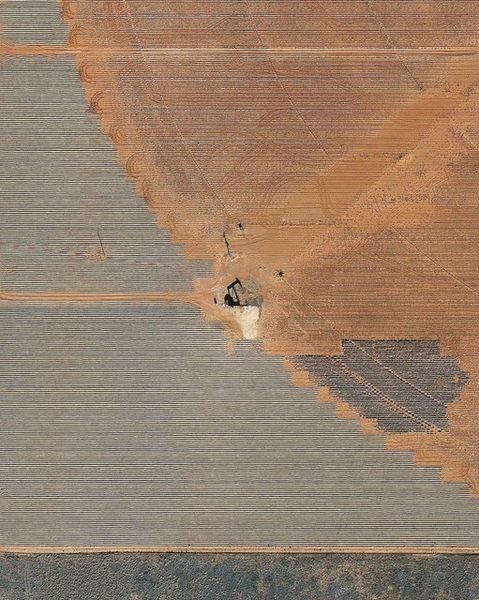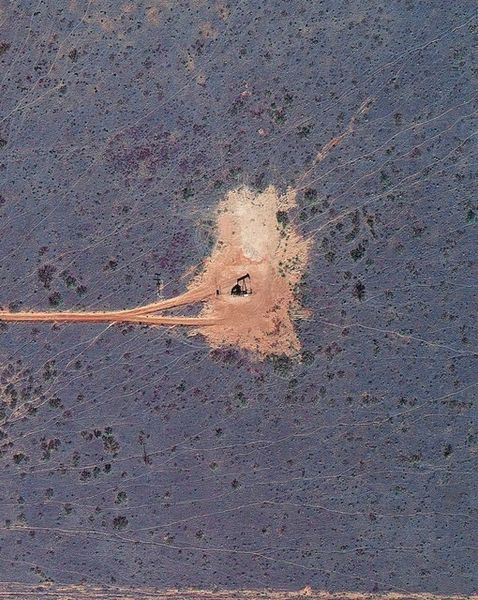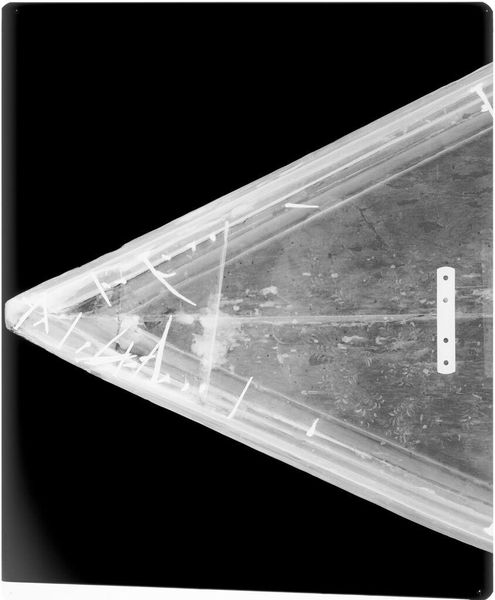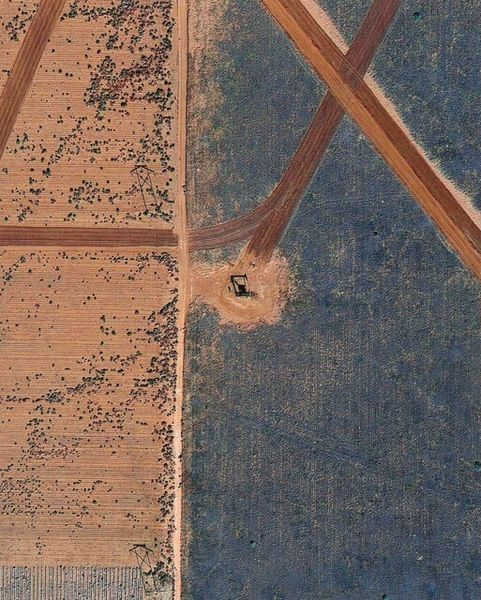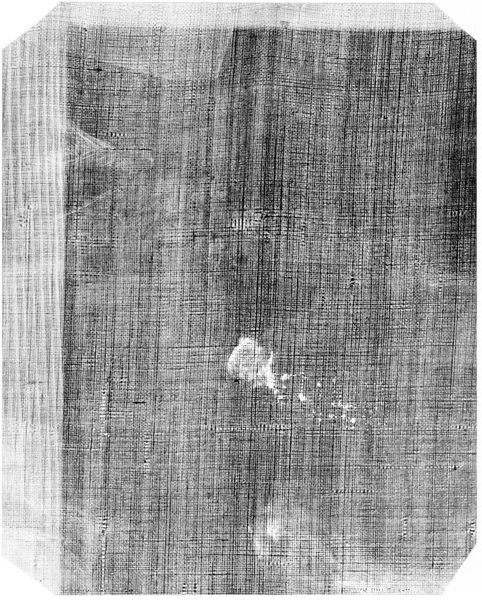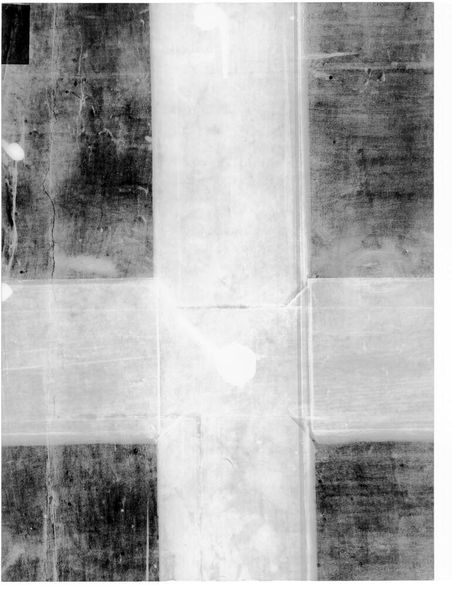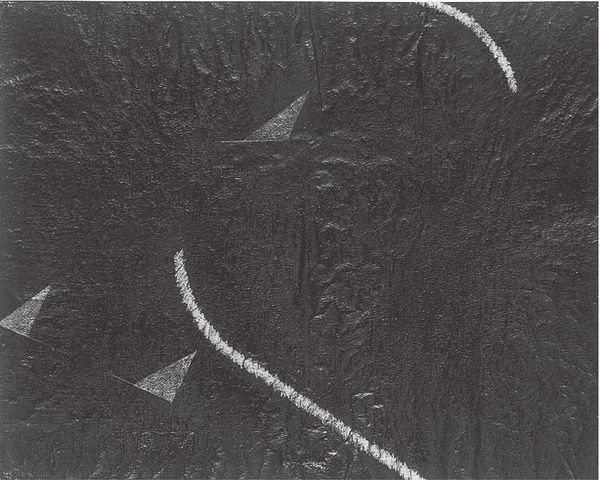
photography
#
contemporary
#
landscape
#
photography
#
geometric
#
modernism
Dimensions: image: 35.9 × 28.9 cm (14 1/8 × 11 3/8 in.) sheet: 39.7 × 32.7 cm (15 5/8 × 12 7/8 in.)
Copyright: National Gallery of Art: CC0 1.0
Editor: This is Mishka Henner's "API 21930915 San Andres, TX," a 2012 photograph. I'm struck by the strong diagonal lines; it's almost dizzying! And then there's that stark industrial element breaking the pattern. How do you interpret this work from a formalist perspective? Curator: Note how the parallel lines, alternately dark and light brown, establish a powerful rhythm. Consider how that rhythm is then disrupted by the off-center placement of the oil pump, almost as an after thought. How does the artist use colour? Editor: Well, the limited palette, earthy tones of brown, tan, and a little grey makes it quite striking, not very dynamic. The colours seems monotonous, until that singular construction introduces complexity and form. Curator: Precisely. The texture, or the illusion thereof, becomes crucial. The image presents the surface as being etched. From this, it becomes about planes in the earth, with the oil pump breaking the pictorial logic. Now think about semiotics – what signs are present and what do they suggest in our culture? Editor: The strong geometric linearity implies control, and perhaps imposed order on nature; the mechanical structure suggests that progress and industry undermine the serenity and impose form on function. Curator: Yes, it's about dissecting the visual relationships within the image itself, independent of any narrative context. The lines function as pure form, their repetition creating a visual tension with the singular structure. Does our reading require something about where it exists? Editor: Not at all! It's fascinating to see how a purely formal reading reveals such a complexity of meanings simply through line, shape, and composition! It shifts focus away from the immediate topic of environmental awareness into that of formal consideration and pictorial deconstruction. Curator: Exactly. By prioritizing the formal elements, the artwork creates a framework for deconstruction and alternative readings, which are valid within its visual form.
Comments
No comments
Be the first to comment and join the conversation on the ultimate creative platform.

